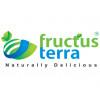Skin Allergies in Children: Causes, Care and Practical Remedies

Skin allergies and baby rashes are common worries for parents. Skin rashes in young children can look alarming, but most are treatable, and many are a normal part of childhood. This guide explains what causes skin allergies, how to spot different skin allergy types, simple skin allergy remedy steps parents can try at home, and when to seek professional help. It also includes clear parenting tips and points parents to photo guides so they can compare skin allergy types with pictures and better describe what they see.
Many kids' allergies start as a simple red patch, an itchy spot, or tiny bumps. Some rashes are allergic reactions, while others are infections or heat-related. Knowing the difference between allergic rashes and other skin problems helps parents choose the right care and avoid unnecessary treatments.
What counts as a skin allergy?
A skin allergy happens when a child’s immune system reacts to something the skin meets — a food, a fabric, a soap, or a plant. That reaction can cause hives, red itchy patches, or dry scaly areas. Common allergic skin problems include atopic dermatitis (eczema), contact dermatitis, and urticaria (hives). Heat rash and irritant rashes are not always allergic, but can look like allergies when skin becomes red and bumpy from heat, sweat, or friction. Many baby rashes are not allergic in origin; viral rashes, insect bites, and simple irritation can look similar. Clear diagnosis matters because treatment differs.
How common are these problems?
Eczema affects a large percentage of children worldwide, and many families will face at least one common allergic skin problem during childhood. Because eczema and other rashes are common, parents search for safe skin allergy remedy options. Regular skin care and trigger management keep most cases under control and reduce the number and severity of flare-ups.
How to tell allergic rashes from other rashes
Simple checks help identify likely causes. Distribution matters: eczema often appears on cheeks, scalp, or the bends of elbows and knees, while contact dermatitis is limited to where the skin touches the trigger. Viral rashes tend to spread more widely and can come with fever. Texture and look also help: hives are raised and often pale in the center with red edges; eczema is dry, scaly, and may show small blisters in babies; heat rash shows tiny red bumps in sweat-prone areas. Timing is important: if a rash appears right after exposure to a new soap, cream, toy, or food, contact allergy is likely. If rashes come with cough or fever, an infection is possible. Severe itching that disrupts sleep often points to eczema or hives. When uncertain, compare the child’s rash to trusted photo guides or contact a health professional for a diagnosis.
First-line home care: safe, effective skin allergy remedies
Most mild skin allergies improve with careful at-home care. These steps work for many baby rashes and childhood allergic skin problems: Keep skin clean and gentle — use mild, fragrance-free cleansers and short lukewarm baths, avoid scrubbing, and pat skin dry gently before applying moisturizer while skin is slightly damp. Daily gentle bathing helps remove irritants but avoid hot water and long baths. Moisturize often — apply a good emollient at least twice a day to seal moisture into the skin. For eczema-prone children, regular moisturizing is one of the most important measures to prevent flares; thick creams or ointments are usually best and should be used liberally on dry patches. Identify and avoid triggers — check clothing labels and products for fragrances, dyes, or harsh chemicals that can cause contact dermatitis; use cotton clothing and breathable fabrics; keep a simple diary of foods, lotions, and exposures to help spot patterns. Soothe the itch — cool compresses and oatmeal baths can calm itching quickly; over-the-counter antihistamines may help with hives or severe itching, but discuss doses and options with a pediatrician. Avoid home remedies that irritate — lemon, undiluted vinegar, or strong herbal pastes can worsen sensitive skin; stick to gentle, proven remedies and check with a professional before trying something new.
When medication is needed
If a rash does not improve with basic care or becomes infected, topical or oral treatments may be needed. Topical corticosteroids are a common and effective treatment for eczema flare-ups. Used correctly under guidance, they control inflammation and reduce itching; stronger steroid creams should only be used with medical advice. Topical calcineurin inhibitors and other nonsteroidal options are available for children who cannot use steroids or for sensitive areas like the face. Oral antihistamines can help with hives and severe itching; some sedating antihistamines are used at night to help sleep during bad flares, but always discuss risks and dosage with the pediatrician. Seek medical advice before using prescription creams or oral medicines because a clear diagnosis helps the doctor pick the safest and most effective treatment.
Managing specific skin allergy types
Eczema (Atopic dermatitis)
Use a daily emollient routine. Treat flares early with an appropriate topical steroid as advised by a doctor. Watch for infection — if skin becomes warm, oozes, or develops yellow crusts, medical treatment may be required. Long-term control focuses on keeping skin well moisturized and avoiding known triggers.
Contact dermatitis
Remove the suspected irritant immediately. Clean the area gently and use a regular moisturizer. For severe reactions, a short course of prescribed topical steroid may be needed. If metal jewelry or a clothing dye is the cause, switching materials usually solves the problem.
Hives (Urticaria)
Antihistamines reduce itching and swelling. If hives come with facial swelling, breathing trouble, or dizziness, treat them as an emergency and get immediate medical help. Hives can be short-lived or come in waves; identifying triggers helps reduce recurrence.
Viral rashes and infections
Viral rashes often come with fever or respiratory symptoms. Most viral rashes resolve on their own with supportive care and rest, but if a child looks unwell, has a high fever, or cannot keep fluids down, call a health professional.
Practical parenting tips to reduce flare-ups
Establish a simple skin care routine — twice-daily moisturizing and gentle baths will prevent many flare-ups. Pick gentle laundry and skin products — fragrance-free detergents and soaps reduce contact irritation. Dress for comfort — cotton and breathable layers protect skin and reduce overheating; avoid wool directly on sensitive skin. Keep nails short — short nails cut down on damage from scratching and reduce infection risk; use cotton gloves at night for toddlers who scratch in sleep. Manage the environment — dust mites, pet dander, strong perfumes, and cigarette smoke can worsen allergies; use regular cleaning, keep pets out of the bedroom if needed, and keep smoking away from the child. Food steps — food allergies can cause skin reactions for some children; if a food is suspected, discuss testing with a pediatrician or allergist before making major diet changes. Document patterns — a short diary of foods, products, and rashes helps identify triggers over time.
When to see a doctor or specialist
Contact a doctor if any of the following happen: the rash covers a large body area, is painful, or the child looks unwell; signs of infection such as increased redness, warmth, pus, or fever; difficulty breathing, swelling of the face or mouth, or fainting — these are emergency signs of a severe allergic reaction. Regular flare-ups that interfere with sleep or daily life despite good skin care warrant referral to a dermatologist or allergist. Specialists can offer targeted tests and treatment plans to reduce flare frequency and improve quality of life.
How doctors diagnose skin allergies
Diagnosis starts with a clinical exam and a clear history. Doctors ask about timing, foods, personal or family history of asthma or hay fever, and products used on the skin. For contact allergy, patch testing can identify specific triggers. For suspected food allergy, testing and supervised food challenges may be needed. Diagnostic tests are tools that work together with clinical judgment to form a safe plan.
Home care checklist for parents
Keep a gentle cleanser and two good emollients on hand. Moisturize twice daily, more during flare-ups. Consider discussing an antihistamine option with the pediatrician for hives or severe itching. Remove suspected irritants and note them in a diary. Know emergency signs of anaphylaxis and have a plan. Seek specialist care if rashes persist, worsen, or affect daily life.
Frequently asked questions
Q: Are baby rashes always allergic? No. Many baby rashes come from heat, infections, or irritated skin. Allergy is just one of several causes. Comparing the rash to reliable picture guides and noting timing helps narrow the cause.
Q: Can food cause skin rashes in children? Yes. In some children, foods can cause hives or worsen eczema. Food causes are more common in infants and often improve with age. Do not eliminate major foods without medical advice and proper testing.
Q: Are steroid creams safe for kids? Used correctly and under medical guidance, steroid creams are safe and effective for eczema flares. Follow the recommended strength and duration to limit side effects.
Final practical note
Skin allergies in children are common and usually manageable. Simple daily habits such as regular moisturizing, gentle bathing, and removing obvious triggers produce big results. When rashes do not respond to basic care or when severe symptoms appear, medical advice is the right next step. Pediatric specialists can guide safe treatments and long-term plans so children can be comfortable and active. For quick visual references, photo libraries and rash guides from reliable health organizations are a helpful way to match what parents see at home with likely causes.


























